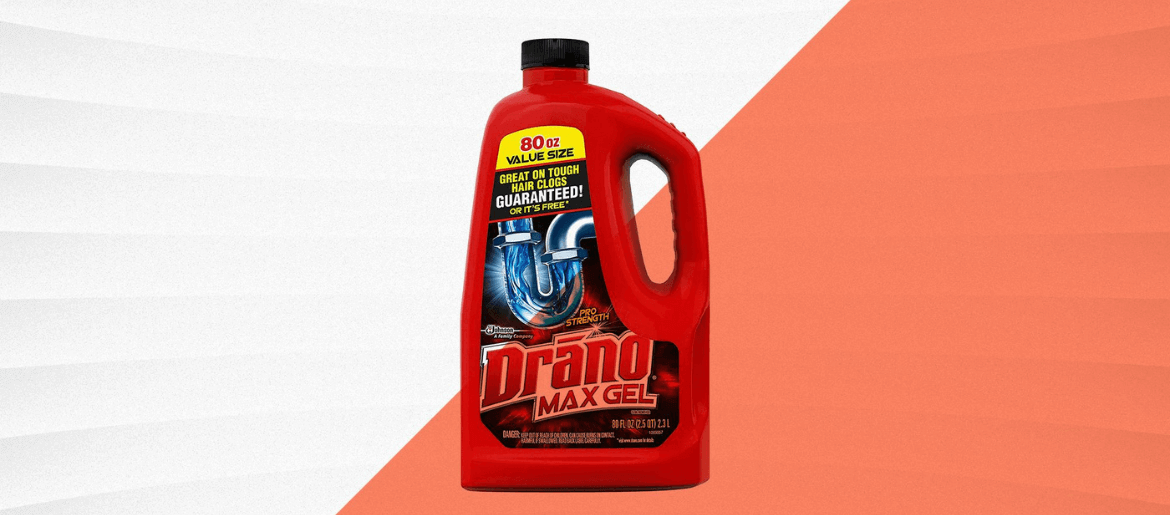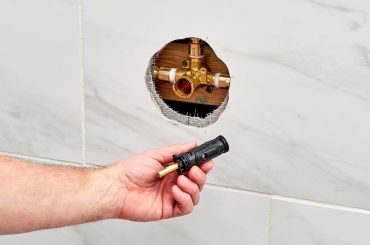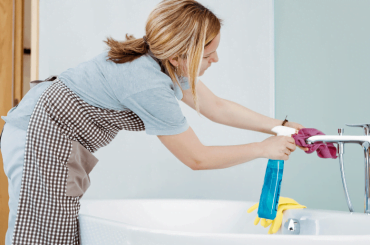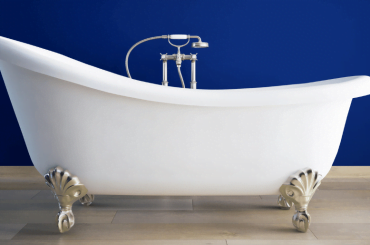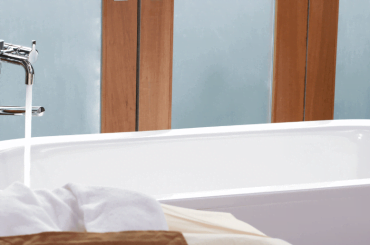Drano is one of the most popular and common household cleaners it can be used to remove clogs in the sink, toilet or shower. It’s a great option for unclogging drains, but many people wonder how long they need to wait before taking a shower after using it.
In this post, we’ll explore the answer to that question and provide some tips for keeping safe while using Drano.
Can I Use Shower After Using Drano?
It is best to wait at least an hour after using Drano before showering or bathing. This will give the Drano time to work and also minimize your exposure to any fumes that may be present in the bathroom.
It is important to make sure that all of the Drano has been thoroughly flushed away with hot water before entering a shower or tub.
Additionally, it is recommended that you open windows for ventilation while using the product. Be sure to wear rubber gloves and safety goggles when handling Drano.
If you experience any skin irritation or breathing difficulties, discontinue use immediately and contact a medical professional if needed. After use, dispose of all containers according to local disposal guidelines.
Taking these precautions can help protect your health and safety when using Drano in your home.
Risks Associated With Using Drano
- Using Drano can produce hazardous gases and fumes, which can irritate the eyes, throat and lungs, leading to coughing and wheezing.
- Inhalation of Drano fumes may cause an asthma attack or other respiratory problems that would require medical attention.
- Ingesting Drano can cause severe burns to the mouth, throat, oesophagus and stomach. In extreme cases, it can even lead to death.
- If ingested, even in small amounts, Drano could cause nausea, vomiting and abdominal cramps requiring hospitalization.
- kin contact with undiluted Drano can result in severe burns due to its caustic nature; care should be taken when handling it to avoid skin contact.
- If splashed into the eyes, it causes extreme pain and possible blindness if not properly treated by a medical doctor.
- If Drano is used in a sink or bathtub, it may react with the metal pipes and cause a chemical reaction that would be hazardous to anyone coming into contact with it.
- Mixing Drano with other cleaning products, such as bleach or ammonia, can create dangerous gases that can cause serious health issues if inhaled or come into contact with the skin.
- Improper disposal of Drano could result in environmental pollution which can have long-term consequences for the local ecosystems and water sources.
- Ingestion of Drano by pets or wildlife can lead to severe medical complications including death if not properly treated.
- Finally, improper use of Drano, such as excessive use or trying to unblock a pipe that is too large for the product can lead to damage to pipes and plumbing fixtures which could be costly to repair.
Therefore, it is important to handle it with care. Always read and follow the instructions on the label before using Drano products. If you have any doubts, seek professional advice from a plumber or other expert before taking any action.
Never mix Drano with other cleaning agents and always properly dispose of its containers by your local regulations. Taking these precautions will help ensure safety when using Drano products.
Are there any risks associated with showering after using Drano?
Yes, there are some risks associated with showering after using Drano. The sodium hydroxide and other corrosive ingredients can remain on the skin and cause irritation or burning sensations after contact with water or moisture.
It is also important to note that even if you rinse thoroughly with water, traces of the chemical may remain in the pipes or drains. As a result, it is recommended that any contact between Drano and your skin be avoided altogether.
Additionally, inhaling the fumes from Drano can be hazardous as well and should be avoided at all costs. If you do need to use Drano for a clogged drain, always make sure to use protective gear such as gloves and eyewear before handling the product.
Lastly, always make sure to carefully read the instructions on the container and follow them as directed.
In summary, showering after using Drano is not recommended due to potential skin irritation or other health risks. If you do need to use Drano for a clogged drain, always wear protective gear and be sure to follow all instructions exactly as directed.
What to do if you experience any adverse effects from using Drano?
If you experience any adverse effects from using Drano, it is recommended to take the following actions:
- Immediately rinse off any affected skin with cold water to help reduce the chemical’s potential irritative effects.
- If necessary, seek medical attention for symptoms of burning or irritation.
- Discontinue the use of the product and contact your local waste department for further instructions on disposing of it safely.
- Wear protective gear such as gloves, eyewear and a face mask when working with Drano in the future.
- Follow all instructions carefully when using any simulation to avoid potential health risks.
- Seek the advice of a professional plumber or another qualified expert if you need assistance with a clogged drain.
- Lastly, always read the label before using any product and follow all instructions exactly as directed.
By following these steps, you can help minimize any potential health risks associated with Drano and other similar products.
FAQs – After Using Drano Can I Shower?
Why do plumbers say not to use Drano?
Plumbers often advise against using Drano due to the potential health risks associated with it. The corrosive ingredients in Drano can cause skin irritation or burning sensations as well as fumes that could be hazardous if inhaled.
Furthermore, improper use of the product or mixing it with other cleaning agents can lead to damage to pipes and plumbing fixtures, which could be costly to repair. Therefore, it is important to handle Drano with care and follow all instructions exactly as directed.
Is it safe to use Drano in a toilet?
No, it is not recommended to use Drano in a toilet. Toilets are made of porcelain, which is not resistant to the corrosive ingredients found in Drano. Therefore, using Drano in a toilet could lead to costly repairs and should be avoided.
It is best to seek the advice of a professional plumber or another qualified expert if you are having issues with a clogged toilet.
Can Drano be used in garbage disposals?
No, it is not recommended to use Drano in garbage disposals. The corrosive ingredients found in Drano can corrode the blades and other components of garbage disposal, causing damage and potentially requiring costly repairs. Furthermore, the ingredients in Drano could remain in the drain pipes after use, potentially causing further damage.
Therefore, it is best to avoid using Drano in garbage disposals altogether. If you are having issues with a clogged drain, it is best to seek the advice of a professional plumber or another qualified expert for assistance.
Can you use Drano if water is in the tub?
No, it is not recommended to use Drano if the tub contains any water. The ingredients in Drano are highly corrosive and can cause skin irritation and other health risks.
Furthermore, if Drano is mixed with water it can cause a hazardous reaction that could result in serious injury.
What happens if you forget to run hot water after Drano?
If you forget to run hot water after using Drano, it can cause the clog to remain in place and worsen. The active ingredients in Drano can cause the clog to partially dissolve, but without the hot water, it won’t be able to fully clear out the obstruction.
This can lead to further damage to the drain pipes and could even cause the clog to spread.
Is Drano, okay to use once?
Due to the harsh chemical ingredients in Drano, it is not recommended that you use it more than once.
Repeated use of Drano can cause damage to the drain pipes over time and could even release hazardous fumes into your home.
If you need to unclog a drain multiple times, it is best to seek out an alternative method that is gentler on your pipes, such as a plunger or snake.
Wrap
In short, it is not advised to shower immediately after using Drano. The chemicals can cause irritation and burning if they come in contact with your skin or eyes.
It is important to follow the instructions on the product label and best to wait at least 30 minutes to an hour before taking a shower or coming into contact with the treated area.

